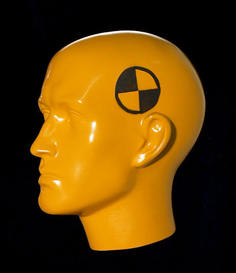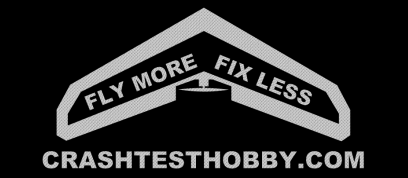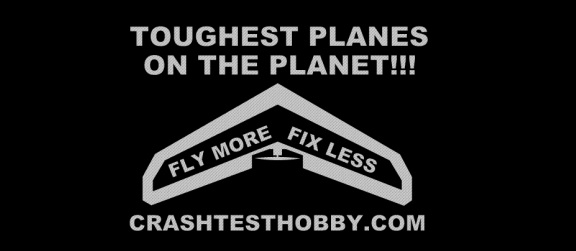SAFETY - A Must Read

The future of radio control depends on your commitment to flying safety. You can fly safely. Know your limits. Know the local regulations and follow them. Choose safe places to fly and fly in a responsible manner so you don't disturb others or bring negative attention to yourself or the hobby. Remember, you are solely responsible for any injuries or damage you cause. Fly responsibly and be courteous to others.
Many communities have also already passed laws restricting radio control access to parks, open areas and public areas. These regulations have come because of of a few inconsiderate flyers who either put people at risk or created unwanted noise. We need to be polite and follow local laws and regulations. Being safety minded and courteous is how we best protect our hobby.
Safety should be discussed frequently at the flying fields. Set up some basic rules that will help prevent injuries. No one wants to be hit. No one wants to be the flier that lost control of his plane. Certain planes tend to be more dangerous and need to be flown at model airfields. Collisions are most dangerous with helicopters and front mounted gas motors on heavy planes but can happen with any plane.
I’ve seen a few cuts and injuries over the years but most of them happen with the starting and launching of the plane. Usually it is the pilot touching the prop on his own plane while the plane is on the ground or during hand launching. Be careful when you are carrying your plane that you don’t accidentally bump the throttle on the transmitter while your hand is near the propeller.
The biggest safety hazards happen when people fly where they shouldn’t be flying, especially over the heads of people who aren’t watching. I have seen people flying over sports parks directly over kids playing soccer or baseball. Flying has been banned at many fields because someone wasn’t thinking about how they were distracting scheduled events or putting others at risk. Don’t fly near airports, over crowds, or roads. Avoid flying near buildings, power lines, or towers.
Don’t forget, the prop can be dangerous while the plane is still at home, too. Remove your prop while you build or repair your planes.
Lithium-Polymer batteries require special care and handling. For more details about Li-Po’s, read the Batteries & Chargers article.
There is currently federal legislation in committee discussing the regulation of FPV because of a few foolish flyers.
First person video (FPV) is where the plane has a live video feed so the pilot can see as if he were on the plane by looking at a computer screen or through special goggles. Because of this, planes can be flown higher and farther than ever before. FPV is great, but it remains the responsibility of the builder and the flyer to follow local laws and regulations regarding the use of any plane including those carrying FPV equipment.
FPV equipment can separate the aircraft from the pilot by amazing distances but it doesn't separate him from the responsibility for any damage or injury he or his aircraft may cause.
New electronics are making amazing things possible, but just because you can does not mean you should. Many FPV set ups require you to get a HAM radio license. Planes should not be flown over populated areas or in a way that could put other people or property at risk. Some of the FPV planes are being flown at altitudes above that allowed for model planes putting them in commercial airport traffic routes. There are restrictions in place already in some areas because of the behavior of a few. Please be safe, courteous and wise with how and where you fly and what you post on the internet and YouTube.
The nightly news is full of stories of the number of "drones" that are flying over our cities. Don't do or post anything that could make the nightly news. Search and Rescue, police and fire departments and wildlife and land managers are using FPV in their work but this is creating a strong public opinion after the military actions using drones overseas and the possibility of the same technology over our own cities by our own governments. Please be safe, courteous and wise with how and where you fly.
The Academy of Model Aeronautics has a web site with a lot of information and they also offer insurance for RC flyers if you will follow the rules they subscribe to. I am a member.
-Lee
Many communities have also already passed laws restricting radio control access to parks, open areas and public areas. These regulations have come because of of a few inconsiderate flyers who either put people at risk or created unwanted noise. We need to be polite and follow local laws and regulations. Being safety minded and courteous is how we best protect our hobby.
Safety should be discussed frequently at the flying fields. Set up some basic rules that will help prevent injuries. No one wants to be hit. No one wants to be the flier that lost control of his plane. Certain planes tend to be more dangerous and need to be flown at model airfields. Collisions are most dangerous with helicopters and front mounted gas motors on heavy planes but can happen with any plane.
I’ve seen a few cuts and injuries over the years but most of them happen with the starting and launching of the plane. Usually it is the pilot touching the prop on his own plane while the plane is on the ground or during hand launching. Be careful when you are carrying your plane that you don’t accidentally bump the throttle on the transmitter while your hand is near the propeller.
The biggest safety hazards happen when people fly where they shouldn’t be flying, especially over the heads of people who aren’t watching. I have seen people flying over sports parks directly over kids playing soccer or baseball. Flying has been banned at many fields because someone wasn’t thinking about how they were distracting scheduled events or putting others at risk. Don’t fly near airports, over crowds, or roads. Avoid flying near buildings, power lines, or towers.
Don’t forget, the prop can be dangerous while the plane is still at home, too. Remove your prop while you build or repair your planes.
Lithium-Polymer batteries require special care and handling. For more details about Li-Po’s, read the Batteries & Chargers article.
There is currently federal legislation in committee discussing the regulation of FPV because of a few foolish flyers.
First person video (FPV) is where the plane has a live video feed so the pilot can see as if he were on the plane by looking at a computer screen or through special goggles. Because of this, planes can be flown higher and farther than ever before. FPV is great, but it remains the responsibility of the builder and the flyer to follow local laws and regulations regarding the use of any plane including those carrying FPV equipment.
FPV equipment can separate the aircraft from the pilot by amazing distances but it doesn't separate him from the responsibility for any damage or injury he or his aircraft may cause.
New electronics are making amazing things possible, but just because you can does not mean you should. Many FPV set ups require you to get a HAM radio license. Planes should not be flown over populated areas or in a way that could put other people or property at risk. Some of the FPV planes are being flown at altitudes above that allowed for model planes putting them in commercial airport traffic routes. There are restrictions in place already in some areas because of the behavior of a few. Please be safe, courteous and wise with how and where you fly and what you post on the internet and YouTube.
The nightly news is full of stories of the number of "drones" that are flying over our cities. Don't do or post anything that could make the nightly news. Search and Rescue, police and fire departments and wildlife and land managers are using FPV in their work but this is creating a strong public opinion after the military actions using drones overseas and the possibility of the same technology over our own cities by our own governments. Please be safe, courteous and wise with how and where you fly.
The Academy of Model Aeronautics has a web site with a lot of information and they also offer insurance for RC flyers if you will follow the rules they subscribe to. I am a member.
-Lee


